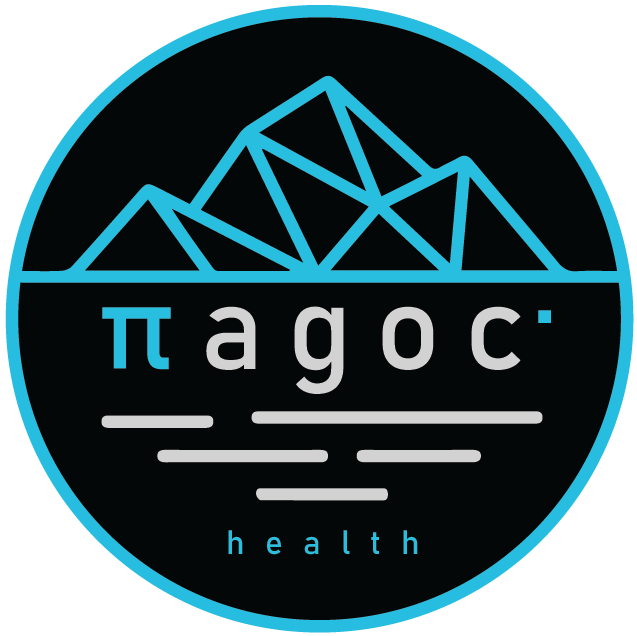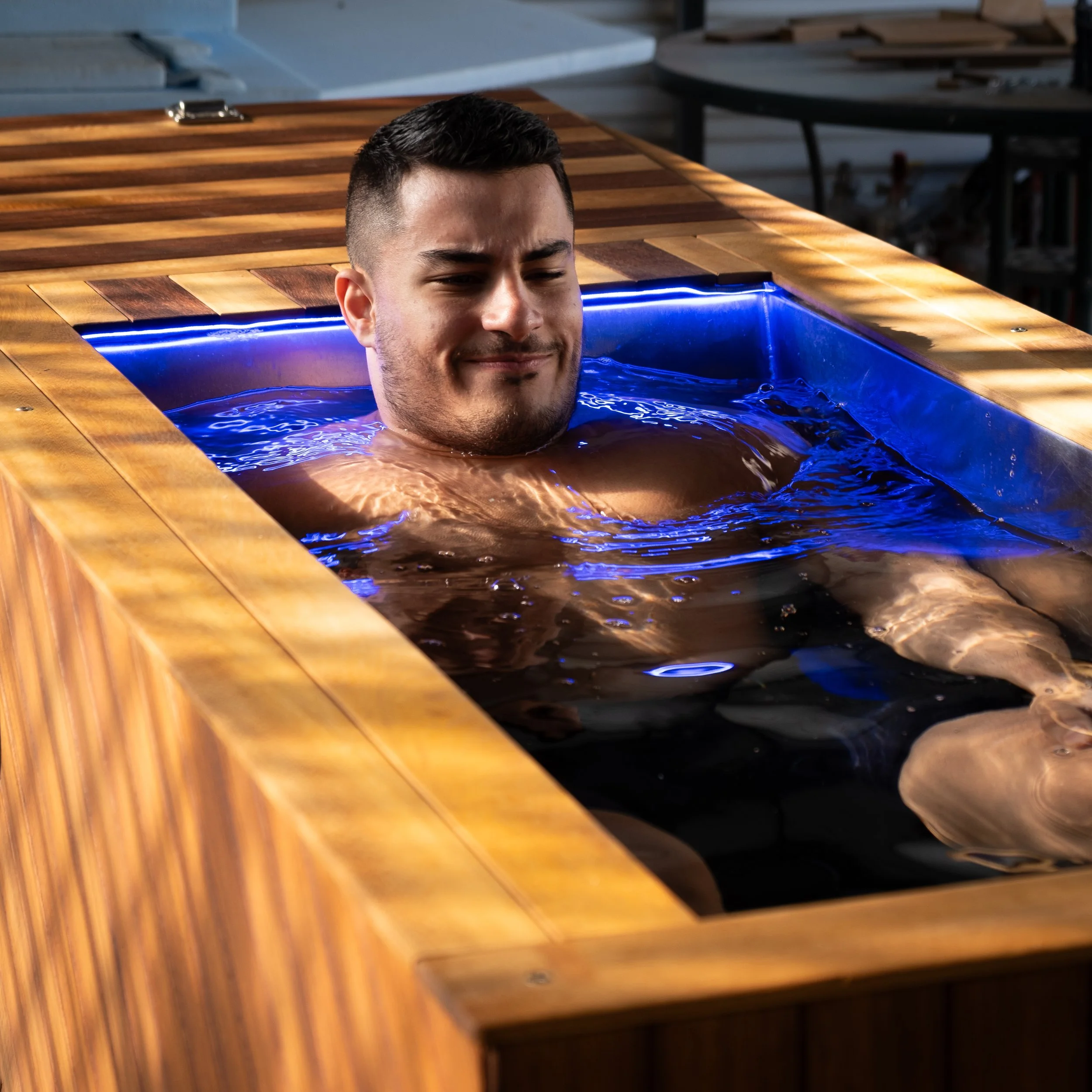Your Journey with Πagoc°
We know ice baths can feel intimidating at first, but you’re not alone on this journey, we are here to guide you throughout the process. Cold exposure is a powerful tool for enhancing your physical recovery, mental toughness, and overall well-being—but like any skill, it takes time to master. That’s why we’ve designed this step-by-step guide to help you ease into the process, starting gradually and progressing at your own pace.
By following this guide, you’ll build the confidence and resilience needed to safely work your way toward colder, longer ice baths, unlocking greater benefits with each step. Whether you’re a Beginner just starting out, an Intermediate enthusiast looking to take it further, or an Advanced cold exposure practitioner ready to push your limits, this guide has a tailored plan for you.
How It Works:
Start at Your Level: Begin where you’re comfortable, with manageable temperatures and times.
Progress Gradually: Each stage builds on the last, helping your body and mind adjust safely.
Reap the Benefits: As you advance, you’ll experience improved recovery, reduced inflammation, enhanced focus, and mental clarity.
Support Along the Way: We include breathing and mindfulness techniques to help you stay calm and present, plus motivational quotes to keep you inspired.
Click on the section that best matches your current level and follow the tailored plan:
Preparing for an ice bath involves mental readiness as well. The mental side of an ice bath is as crucial as the physical preparation. By cultivating a positive and resilient mindset, you can enhance your overall experience and potentially derive greater mental benefits from the practice. Here are some mental aspects to consider that can apply to all levels
Remember, the key to success is consistency and patience. Take it one step at a time, listen to your body, and celebrate every small victory. Let’s get started on your cold exposure journey!
Beginner Level
Step 1: Understanding the Basics
Starting slow is crucial. Your body and mind need time to adjust to the shock of cold exposure.
Step 2: Cold Showers
Week 1-2: Lukewarm to Cool Showers
Duration: 1-2 minutes at the end of your regular shower.
Temperature: Start with lukewarm water and gradually decrease to cool.
Tip: Focus on deep, slow breathing to stay calm.
Breathing Technique: Box Breathing (Inhale for 4 seconds, hold for 4 seconds, exhale for 4 seconds, hold for 4 seconds).
Benefits: Enhances circulation, begins acclimating your body to cooler temperatures. Cold showers are a gentle introduction that allows you to become familiar with the sensation of cold water without overwhelming your system.
Step 3: Cool Water Immersion
Week 3-4: Cool Water Baths
Duration: 2-3 minutes.
Temperature: 15-20°C (59-68°F).
Tip: Stay mindful and focus on your breath.
Breathing Technique: 4-7-8 Breathing (Inhale for 4 seconds, hold for 7 seconds, exhale for 8 seconds).
Benefits: Prepares your body for more intense cold exposure, reduces muscle soreness. Cool water baths provide a more substantial exposure to cold, helping to build tolerance and preparing your body for the next level of cold immersion.
Step 4: Ice Baths Introduction
Week 5-6: Ice Baths with Minimal Ice
Duration: 1-2 minutes.
Temperature: 10-15°C (50-59°F).
Tip: Use guided meditation or music to help relax.
Meditation Approach: Guided Meditation (use apps like Headspace or Calm to find a short, relaxing meditation session).
Mental Consideration: Stay calm, understand that initial discomfort is temporary, and embrace the process. This step marks your first experience with actual ice baths. It’s crucial to maintain a positive mindset and use relaxation techniques to manage the initial shock.
Intermediate Level
Step 1: Increasing Cold Exposure
Now, it's time to challenge your body further and build resilience.
Step 2: Longer Cold Showers
Week 1-2: Colder and Longer Showers
Duration: 3-5 minutes.
Temperature: Cool to cold (around 15°C or 59°F).
Tip: Increase the intensity gradually.
Breathing Technique: Diaphragmatic Breathing (deep breathing from the diaphragm, slow and controlled).
Benefits: Enhances immune function, increases tolerance to cold. Longer and colder showers further condition your body, boosting your immune response and increasing your tolerance to cold.
Step 3: Extended Cool Water Immersion
Week 3-4: Extended Cool Baths
Duration: 5-10 minutes.
Temperature: 10-15°C (50-59°F).
Tip: Maintain a calm state through consistent breathing.
Meditation Approach: Mindfulness Meditation (focus on the present moment, acknowledge sensations without judgment).
Benefits: Improves recovery, strengthens mental fortitude. Extending the duration of cool water immersion helps to deepen the benefits of cold exposure, including enhanced muscle recovery and greater mental resilience.
Step 4: Regular Ice Baths
Week 5-6: Ice Baths with More Ice
Duration: 3-5 minutes.
Temperature: 5-10°C (41-50°F).
Tip: Use breathing techniques like the Wim Hof method.
Breathing Technique: Wim Hof Method (30-40 deep breaths followed by a breath hold).
Mental Consideration: Embrace the discomfort as a pathway to growth, focus on the long-term benefits. Regular ice baths at this temperature level provide substantial benefits and significantly challenge your mental fortitude. Focus on the positive outcomes to stay motivated.
Advanced Level
Step 1: Mastering the Cold
This stage pushes your limits and maximizes the benefits of cold exposure.
Step 2: Cold Showers as a Routine
Week 1-2: Regular Cold Showers
Duration: 5-10 minutes.
Temperature: As cold as you can tolerate (below 15°C or 59°F).
Tip: Embrace the routine and integrate it into your daily life.
Breathing Technique: 2-1-4-1 Breathing (Inhale for 2 seconds, hold for 1 second, exhale for 4 seconds, hold for 1 second).
Benefits: Boosts metabolic rate, enhances mental toughness. Making cold showers a regular part of your routine helps to maintain and further develop your cold tolerance and mental toughness.
Step 3: Intense Cold Immersion
Week 3-4: Intense Cold Baths
Duration: 2-10 minutes.
Temperature: 5-10°C (41-50°F).
Tip: Stay focused and use mental techniques to overcome discomfort.
Meditation Approach: Body Scan Meditation (focus on different parts of your body, one at a time, to release tension).
Benefits: Maximizes anti-inflammatory effects, improves cardiovascular health. Extended exposure to cold baths at this level brings out the full range of physical benefits, including profound anti-inflammatory effects and enhanced cardiovascular health.
Step 4: Full Ice Baths
Week 5-6: Ice Baths with Maximum Ice
Duration: 1-5 minutes.
Temperature: 0-5°C (32-41°F).
Tip: Ensure you have a support system or partner nearby for safety.
Breathing Technique: Controlled Hyperventilation (30 rapid breaths followed by a breath hold, then deep recovery breaths).
Mental Consideration: At this level, the mental challenge is significant. Focus on mental clarity, resilience, and the sense of accomplishment. Visualize the benefits and the strength you're building. Full ice baths at this temperature are the ultimate test of your mental and physical resilience. Ensure safety measures are in place, and take pride in your progress.
Mental Readiness
Set Clear Intentions
Before stepping into the ice bath, define your purpose. Whether it's to improve recovery, boost mental resilience, or challenge yourself, having a clear intention can help you stay focused during the experience.
Breath Control
Practice deep and controlled breathing. Before entering the cold water, take several deep breaths to calm your mind and prepare for the shock. Continue controlled breathing during the ice bath to manage stress and anxiety.
Visualize Success
Imagine yourself successfully completing the ice bath. Visualization can help reduce anxiety and build confidence. Picture yourself remaining calm and in control throughout the process.
Positive Affirmations
Repeat positive affirmations to boost your mental strength. Remind yourself that you are in control, capable, and that the discomfort is temporary. Positive self-talk can significantly impact your perception of the experience.
Embrace Discomfort
Understand that discomfort is part of the process. Embrace the sensation of cold and discomfort as a challenge rather than a threat. This mindset shift can help you navigate the experience with a more positive outlook.
Mindfulness and Present Moment Awareness
Stay present in the moment. Instead of letting your mind wander to thoughts of discomfort or the desire to finish, focus on the sensations of the cold water. Mindfulness can help you tolerate discomfort by keeping you grounded in the present.
Cultivate a Strong Mindset
Develop a resilient mindset. View the ice bath as an opportunity to strengthen your mental toughness. Recognize that you have the capacity to endure challenging situations and come out stronger on the other side.
Release Expectations
Let go of rigid expectations and be open to the experience. Accept that each ice bath may be different, and your mental state can influence the outcome. Avoid placing unnecessary pressure on yourself.
Learn from the Experience
Approach the ice bath as a learning opportunity. Pay attention to how your mind responds to discomfort and challenges. Reflect on the mental strategies that work best for you and adjust as needed.
Celebrate Achievements
Acknowledge and celebrate your mental achievements. Whether it's completing a set time or managing to stay calm in the cold water, recognizing your mental resilience can boost your confidence for future challenges.
Πagoc° Ice Baths
Explore our products and find out how other clients have unlocked peak physical well-being.



